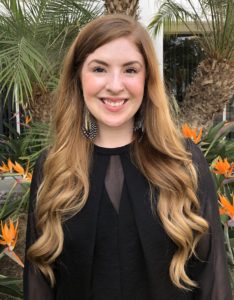- Calls to this hotline are currently being directed to Within Health, Fay or Eating Disorder Solutions
- Representatives are standing by 24/7 to help answer your questions
- All calls are confidential and HIPAA compliant
- There is no obligation or cost to call
- Eating Disorder Hope does not receive any commissions or fees dependent upon which provider you select
- Additional treatment providers are located on our directory or samhsa.gov
Sports Illustrated Swimsuit Model Demonstrates Good Body Image

While there is no single factor that causes negative body image, the media has a powerful influence on our perception of our bodies [1]. According to the National Eating Disorder Association (NEDA), what individuals observe in the media is shown to increase body dissatisfaction and disordered eating behavior [1].
It can be powerful when we see prominent media figures model healthy body image, healthy relationships with food, and realistic body types. A recent example of this is the Sports Illustrated model, Myla Dalbesio.
In an interview with Fox News, Dalbesio talks about her experience being shamed for her body size by various modeling agencies [2]. Dalbesio discussed in her interview how this negatively influenced her mental health and continues to sometimes affect her perception of her body.
However, Dalbesio has made a commitment to accept her natural body size and shape despite bad body image days. This has led to Dalbesio becoming a mentor and positive body influence for many women and girls in America [2].
For many people, making peace with their natural shape and size is the ultimate goal in their body acceptance journey. However, Dalbesio talks about how a positive relationship with her body is an ongoing, daily effort. Just as negative body image isn’t caused by one factor, developing a more positive body image is a result of several things.
Aside from having body-positive mentors and influences, another way to improve body image is to learn about body diversity [1]. Body diversity is the idea that everyone’s body is different.
 NEDA explains that it is impossible for everyone’s body to look the same—even if they did the same type and amount of exercise and ate identically. Our body type is influenced by genetics [1].
NEDA explains that it is impossible for everyone’s body to look the same—even if they did the same type and amount of exercise and ate identically. Our body type is influenced by genetics [1].
One thing that makes media’s portrayal of beauty ideals particularly damaging is the lack of body diversity. Media tends to showcase a particular body type that is far from the average body type. What is shown in the media is not realistic.
This can lead people who do not have this body shape or size to feel that something is wrong with their bodies, resulting in negative body image or disordered eating behaviors [1]. Showing different types of body shapes and sizes in the media is one potential prevention technique that could help decrease the development of eating disorders and negative self-esteem.
Body diversity not only includes body shape and size but includes representation of people of color, people with disabilities, and transgender individuals. There is not one perfect or ideal body type.
The idea that a body should look a certain way is an idea being sold to viewers—but you don’t have to subscribe to this idea. While these ideals may be deeply rooted in your body image, you can begin to confront these ideas by reminding yourself that all bodies are different.
If you begin to compare yourself to someone else, refocus your thinking on things that you appreciate about your body [1]. All bodies are good bodies—including yours.
Resources:
[1] National Eating Disorder Association. (2018). Body image. https://www.nationaleatingdisorders.org/body-image-0 [2] Fox News. (2020, August 15). SI swimsuit model Myla Dalbesio recalls being body-shamed over her size: ‘It’s been a long journey”. https://www.foxnews.com/entertainment/sports-illustrated-swimsuit-2020-myla-dalbesioAbout the Author:
 Samantha Bothwell, LMFT, is a licensed Marriage and Family Therapist, writer, explorer, and lipstick aficionado. She became a therapist after doing her own healing work so she could become whole after spending many years living with her mind and body disconnected. She has focused her clinical work to support the healing process of survivors of sexual violence and eating disorders. She is passionate about guiding people in their return to their truest Self so they can live their most authentic, peaceful life.
Samantha Bothwell, LMFT, is a licensed Marriage and Family Therapist, writer, explorer, and lipstick aficionado. She became a therapist after doing her own healing work so she could become whole after spending many years living with her mind and body disconnected. She has focused her clinical work to support the healing process of survivors of sexual violence and eating disorders. She is passionate about guiding people in their return to their truest Self so they can live their most authentic, peaceful life.
The opinions and views of our guest contributors are shared to provide a broad perspective on eating disorders. These are not necessarily the views of Eating Disorder Hope, but an effort to offer a discussion of various issues by different concerned individuals.
We at Eating Disorder Hope understand that eating disorders result from a combination of environmental and genetic factors. If you or a loved one are suffering from an eating disorder, please know that there is hope for you, and seek immediate professional help.
Published October 20, 2020, on EatingDisorderHope.com
Reviewed & Approved on October 20, 2020, by Jacquelyn Ekern MS, LPC

The EatingDisorderHope.com editorial team comprises experienced writers, editors, and medical reviewers specializing in eating disorders, treatment, and mental and behavioral health.

